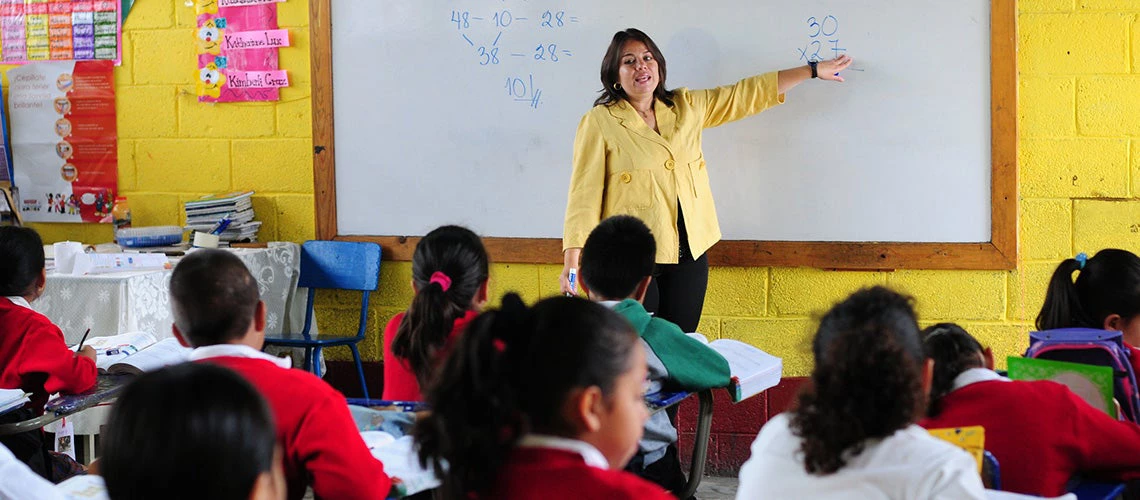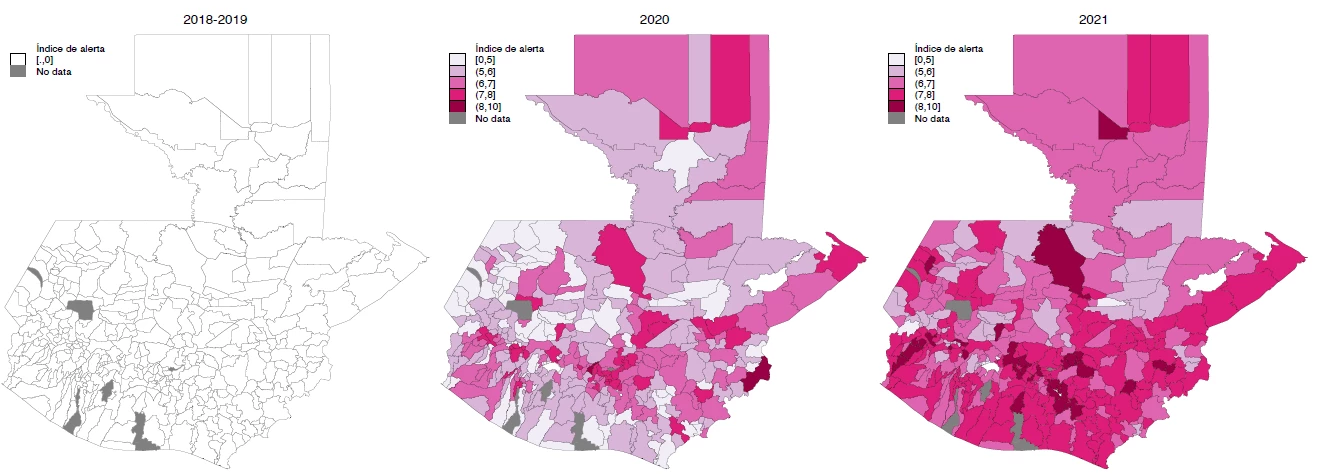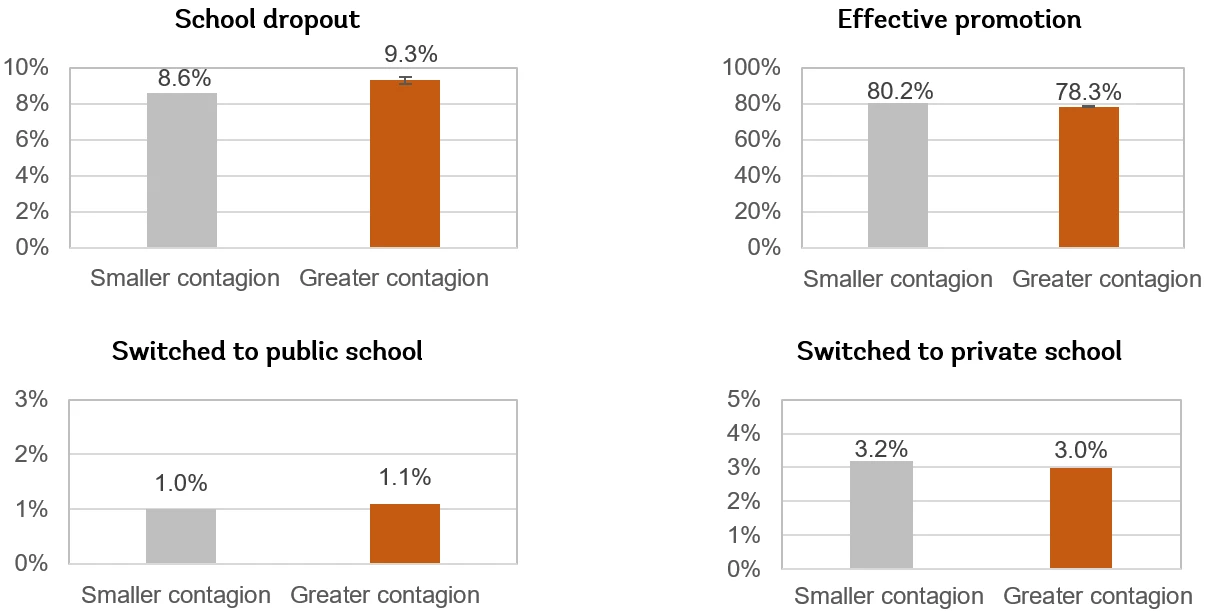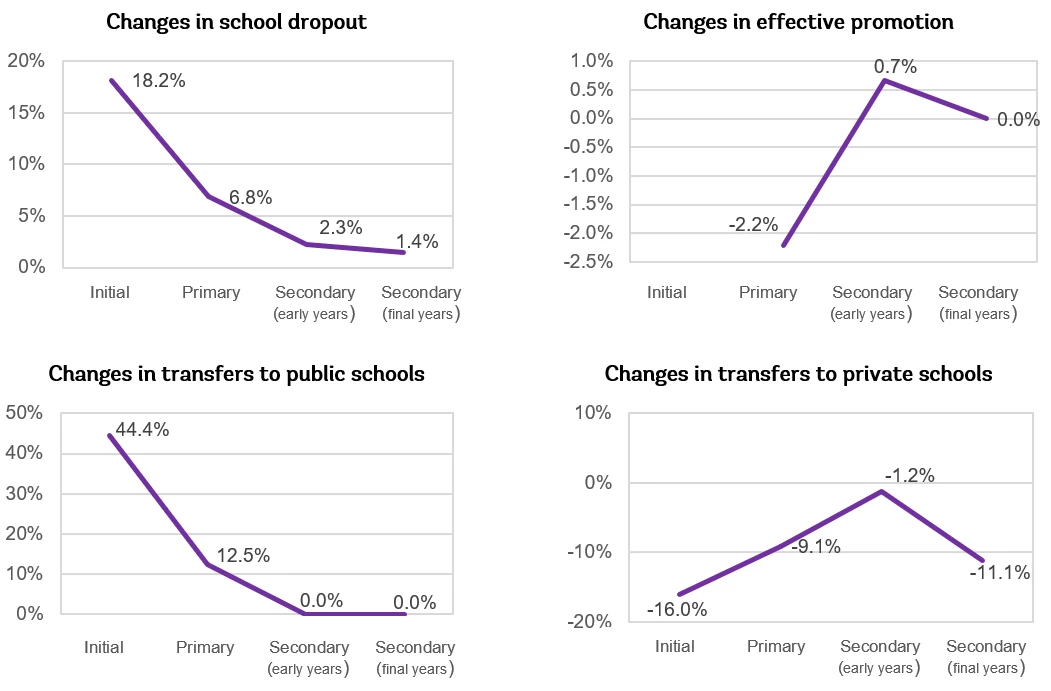 Teacher giving a lesson in the school El Renacimiento, in the municipality of Villa Nueva, Guatemala. Source: World Bank
Teacher giving a lesson in the school El Renacimiento, in the municipality of Villa Nueva, Guatemala. Source: World Bank
The COVID-19 pandemic has affected many aspects of our lives, and education has been no exception . It is critical to understand how the educational costs of this health crisis vary across different regions. In this blog post, we will focus on the impact of the pandemic on education in Guatemala.
Guatemala is among the countries with the lowest educational achievement in Latin America . Only 73 percent of adults have completed primary education, compared to 91.6 percent at the regional level. In addition to low educational achievement, many students drop out of school prematurely. It is estimated that the retention rate between sixth and tenth grade is 42 percent, which means that students who complete primary school do not finish secondary school.
This context is worrisome because school closures and disruptions in face-to-face instruction in the wake of the COVID-19 pandemic may have been an additional reason for students to drop out of formal education , eventually resulting in higher dropout rates than those observed before the pandemic.
Like most countries in the region, restrictions on mobility and crowds were implemented in Guatemala to contain the COVID-19 virus. As part of these measures, the government introduced an alert index to determine the level of emergency in each of its 341 municipalities.
The Ministry of Education used this index to determine whether schools could offer face-to-face, hybrid, or virtual educational services. This education policy decision created an opportunity to measure whether municipalities with more COVID-19 infections had greater negative effects on their educational indicators than municipalities with fewer infections. The variation in this alert index is shown in the following map, which shows the alert index by municipality before and during the pandemic. The lighter areas show municipalities with fewer infections, while the darker areas show municipalities with more cases of COVID-19 infections.
Alert index by municipality, pre and post-pandemic
Effects of the pandemic on education indicators according to contagion rates
- Students in municipalities with more infections had worse educational outcomes.
- The school dropout rate increased by 8.1 percent compared to pre-pandemic levels.
- Students were 2.4 percent less likely to advance to the next grade than pre-pandemic levels.
- Approximately 10 percent of students moved from private to public schools, while movements in the opposite direction decreased by 6.3 percent compared to pre-pandemic levels.
Estimated differences in educational outcomes in areas of greater and smaller contagion
These results suggest that areas with higher contagion faced more severe negative educational consequences . Losses in education outcomes occurred primarily in 2020, which slightly improved in 2021 as the pandemic restrictions began to ease. Younger students were also hit the hardest, as dropout rates and crowding out of students from private to public schools were highest among preschool and primary school students.
Estimated changes in educational outcomes by level
Looking into the Future
The pandemic has presented unprecedented challenges to educational development in Latin America and the world. More research on changes in the quality of education and other education-relevant factors is needed to fully understand the costs of the pandemic in the education sector. Data are not only important for documenting evidence but also for acting. Generating more and better evidence will contribute to building an educational roadmap to ensure the long-term recovery of the education system. Affected students in Guatemala, as well as in the region and globally, deserve to have the necessary tools to ensure that the COVID-19 crisis does not limit their educational trajectories and hinder them from reaching their full potential.
If you want to receive one article a week,
Related articles







Join the Conversation